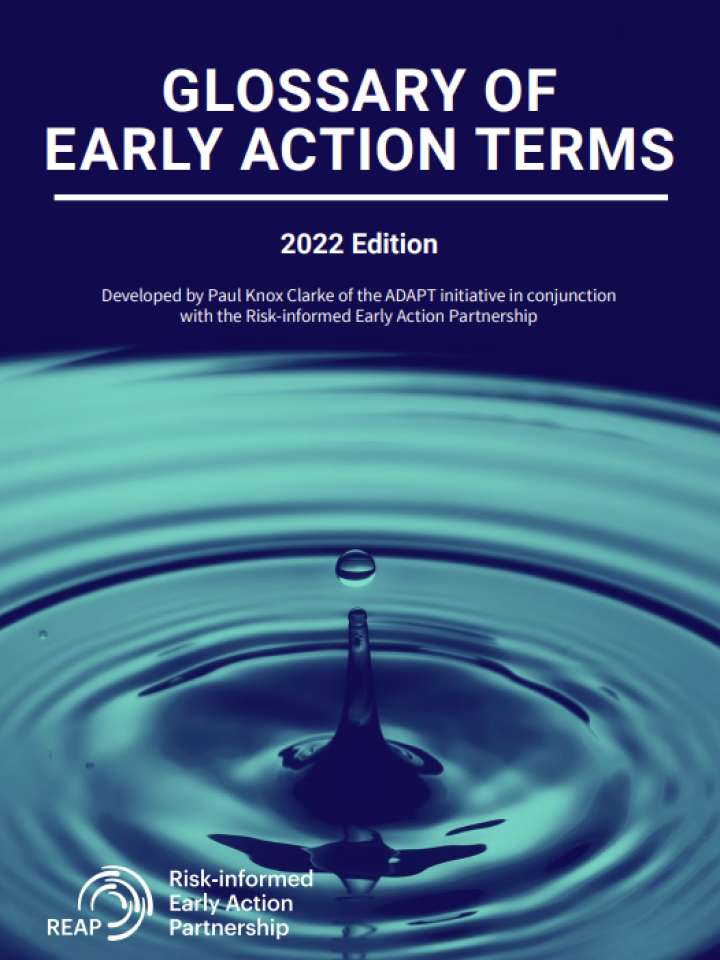Glossary of early action terms: 2022 edition
In an attempt to clarify some key terms, and in keeping with its aim to “bring coherence, alignment, and complementarity” to the field of risk-informed early action, REAP has developed this glossary as a tool to support productive conversations around the topic. Over the last three years there has been a rapid growth of interest in and implementation of risk-informed early action approaches towards crises and disasters. A variety of stakeholders are involved, including humanitarian, development and climate actors; organisations working on risk finance; and providers of early warning and risk analysis information.
These different institutions are often working on very similar issues while - as the recent Early Action: The State of Play report (REAP 2022) demonstrated - employing very different terminology to describe their activities. Alternatively, they may employ the same terms to mean very different things. This confusion on key terms and concepts is not just happening at a sectoral level - it also occurs within individual organisations. Whether within or between organisations, differences over language can lead to confusion and disagreement, impede collaborative work and reinforce the silos that early action approaches need to overcome in order to fulfil their potential. Lack of clarity around key terms and concepts is also off-putting to new and potential stakeholders and may make them less keen to engage in early action work.

